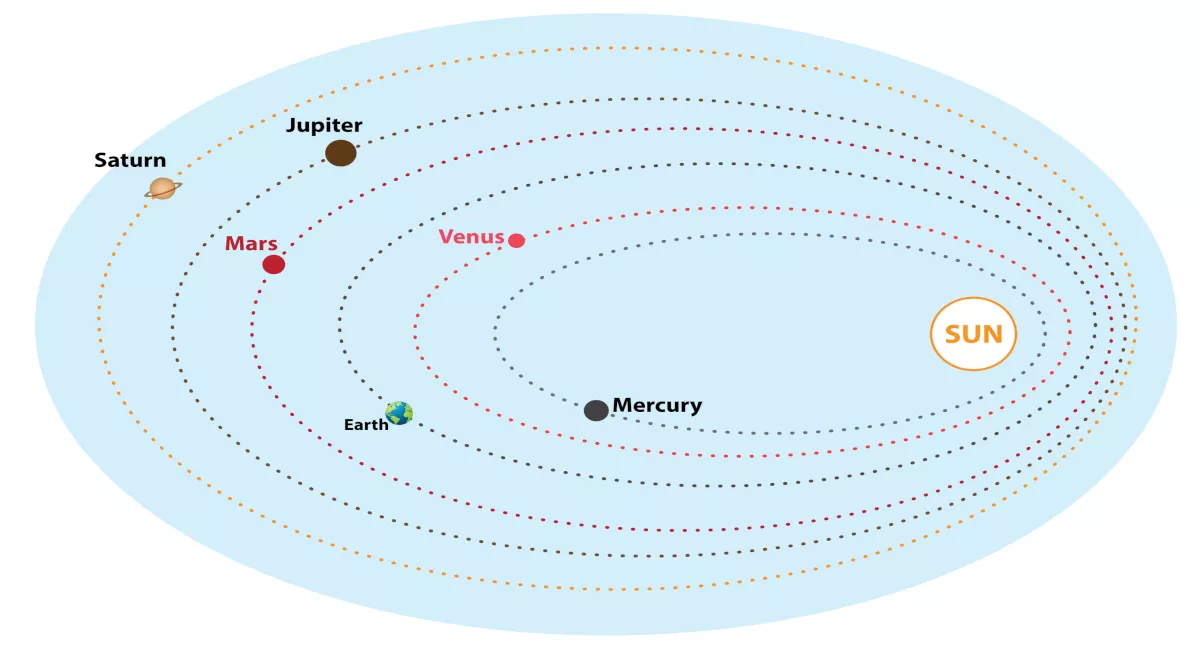
Kepler’s First Law, also known as the Law of Elliptical Orbits, is a fundamental principle of physics that revolutionized our understanding of celestial motion. Named after the renowned German astronomer Johannes Kepler, this law describes the shape and characteristics of the paths followed by objects in orbit around a central body, such as planets orbiting the sun.
In this article, we delve into the fascinating world of Kepler’s First Law and explore 11 extraordinary facts that highlight its significance and impact on our understanding of the universe. From the discovery of eccentricity to the insight it provides into the dynamics of astronomical systems, these facts shed light on the intricate nature of celestial mechanics. So, join us on this cosmic journey as we unravel the mysteries of Kepler’s First Law and its implications for our understanding of the cosmos.
Key Takeaways:
- Kepler’s First Law states that planets move in oval-shaped paths around the Sun, not in perfect circles. This discovery changed our understanding of planetary motion and paved the way for future scientific breakthroughs.
- The Law of Elliptical Orbits, discovered by Johannes Kepler, disproved the ancient belief of circular planetary orbits and laid the groundwork for Sir Isaac Newton’s laws of motion. This revolutionized our understanding of the universe.
The law was formulated by astronomer Johannes Kepler.
Johannes Kepler, a prominent figure in the field of astronomy, developed the first law of planetary motion known as the Law of Elliptical Orbits.
Kepler’s First Law states that planets move in elliptical orbits around the Sun.
According to Kepler’s First Law, the planets do not move in perfect circles but instead follow elliptical paths around the Sun.
The Sun is located at one of the two foci of the elliptical orbit.
In an elliptical orbit, the Sun is situated at one of the two foci, not at the center.
The distance between the planet and the Sun varies throughout its elliptical orbit.
The planet’s distance from the Sun changes as it moves along its elliptical path, resulting in variations in speed and intensity of sunlight received.
Kepler’s First Law applies to all planets in the solar system.
Kepler’s First Law is applicable to not just one or a few planets but to all planets in the solar system, including Earth.
The shape of an elliptical orbit is determined by its eccentricity.
An elliptical orbit can be more elongated or more circular, depending on its eccentricity. A higher eccentricity indicates a more elongated orbit.
An eccentricity of 0 represents a perfect circle.
When the eccentricity of an elliptical orbit is 0, the orbit becomes a perfect circle with the Sun at its center.
The semimajor axis is half the length of the longest axis of the ellipse.
The semimajor axis is a fundamental parameter of an elliptical orbit and represents half the length of the longest axis of the ellipse.
Kepler’s First Law disproved the ancient belief of circular planetary orbits.
Before Kepler’s groundbreaking discovery, it was widely believed that planets moved in perfect circular orbits around the Earth. Kepler’s First Law revolutionized this notion.
The Law of Elliptical Orbits was published in Kepler’s book “Astronomia Nova.”
Kepler presented his Law of Elliptical Orbits in his famous book “Astronomia Nova” published in 1609, which detailed his revolutionary theories on planetary motion.
Kepler’s First Law paved the way for the future development of Newton’s laws of motion.
Kepler’s First Law provided a crucial foundation for Sir Isaac Newton, who later expanded on this knowledge and formulated the laws of motion, including the law of universal gravitation.
Conclusion
In conclusion, Kepler’s first law, also known as the Law of Elliptical Orbits, revolutionized our understanding of celestial motion. Through his meticulous observations and mathematical calculations, Johannes Kepler discovered that planets move in elliptical paths around the Sun, with the Sun located at one of the focal points of the ellipse.
This groundbreaking discovery debunked the previously held belief that planetary motion followed perfectly circular orbits. Kepler’s first law paved the way for further advancements in the field of physics and laid the foundation for Isaac Newton’s laws of motion and universal gravitation.
Understanding Kepler’s first law allows us to unravel the mysteries of our solar system and beyond. It helps us comprehend the complex dynamics of celestial bodies and provides a framework to explore the vastness of the cosmos.
In summary, Kepler’s first law has changed the way we perceive the universe and deepened our understanding of how the planets and other celestial objects move in space.
FAQs
1. What is Kepler’s first law?
Kepler’s first law, also known as the Law of Elliptical Orbits, states that planets move in elliptical paths around the Sun, with the Sun located at one of the focal points of the ellipse.
2. How did Johannes Kepler discover this law?
Johannes Kepler discovered the Law of Elliptical Orbits through years of careful observation and analysis of the planetary motion data collected by his predecessor, Tycho Brahe.
3. What did Kepler’s first law change in our understanding of celestial motion?
Prior to Kepler’s first law, the prevailing belief was that planets moved in perfect circles around the Sun. However, Kepler’s observations and calculations showed that planetary orbits are actually elliptical, challenging the long-held notion of circular orbits.
4. How does Kepler’s first law relate to Newton’s laws of motion and universal gravitation?
Kepler’s first law provided important insights into the nature of planetary motion, setting the stage for Isaac Newton’s laws of motion and universal gravitation. It was through the combination of these laws that a more comprehensive understanding of celestial motion was achieved.
5. Why is Kepler’s first law significant?
Kepler’s first law is significant because it revolutionized our understanding of the structure and dynamics of the solar system. It laid the foundation for further scientific discoveries and opened up new avenues for exploration of the cosmos.
Kepler's groundbreaking discoveries have captivated astronomers for centuries. Dive deeper into his revolutionary Kepler's Laws of planetary motion, which forever changed our understanding of celestial bodies. Explore the intricacies of planetary motion and how it shapes our solar system. Gain a comprehensive understanding of orbital mechanics, the foundation upon which modern space exploration is built. Embark on a journey through the cosmos and uncover the secrets that lie within the orbits of planets and celestial objects.
Was this page helpful?
Our commitment to delivering trustworthy and engaging content is at the heart of what we do. Each fact on our site is contributed by real users like you, bringing a wealth of diverse insights and information. To ensure the highest standards of accuracy and reliability, our dedicated editors meticulously review each submission. This process guarantees that the facts we share are not only fascinating but also credible. Trust in our commitment to quality and authenticity as you explore and learn with us.


